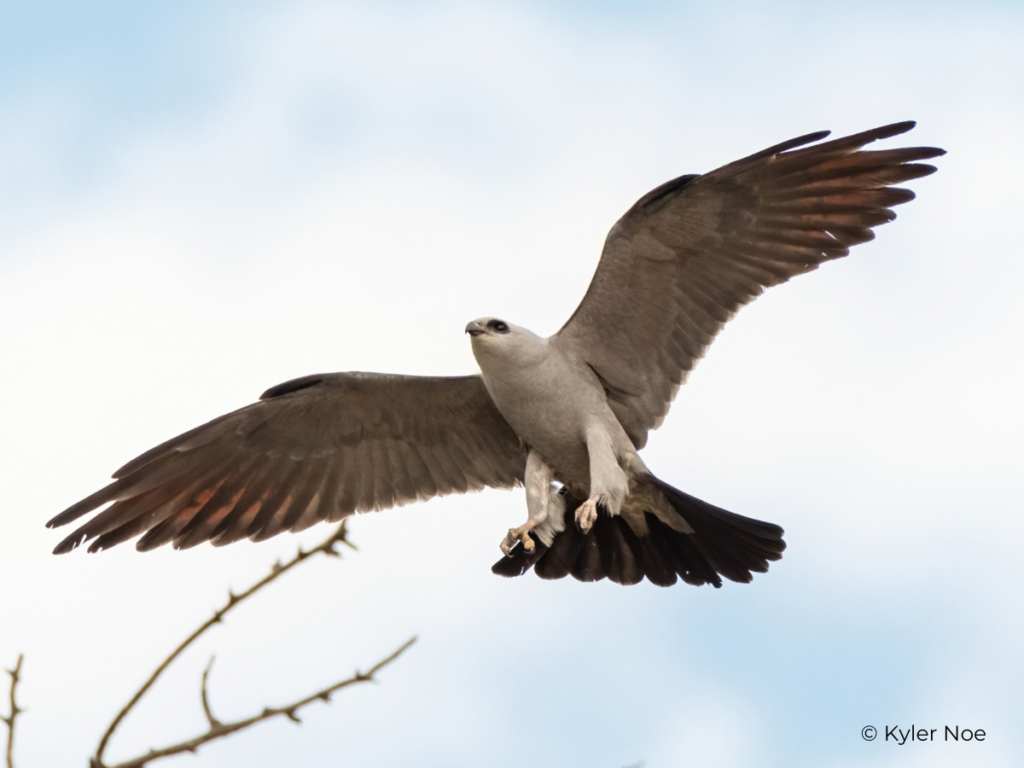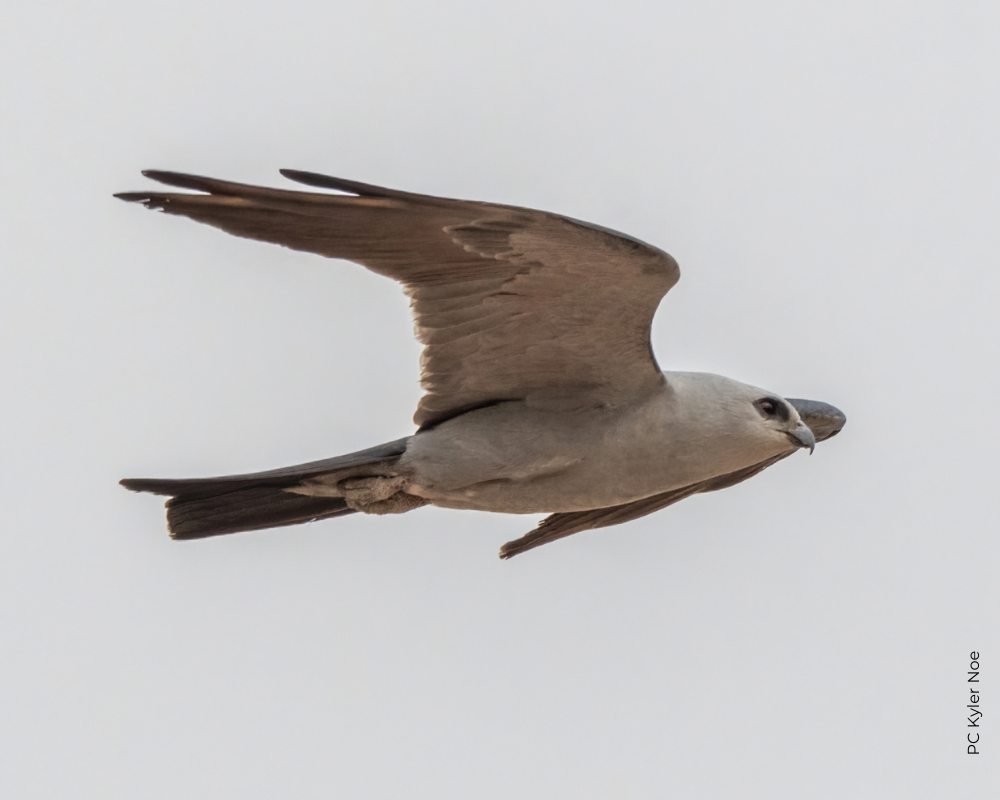Overview
Mississippi Kites are distinctive in plumage, flight style, and foraging behavior. They are amazing aerialists, floating on the air similar to Swallow-tailed Kite twisting, turning, and swooping up and down as they catch flying insects. They are relatively common in the Southeast along local streams but never found in very dense nesting colonies. Their range is currently expanding north, with nesting pairs now as far as several states in New England and possibly into Ontario. Mississippi Kites are found nesting west of Colorado and Arizona and are seen rarely in southern California. They occupy a variety of habitats, but nests are almost always found in large, live deciduous trees. They nest mainly near water but also use shelterbelts with adjacent open fields on the southern Great Plains to Illinois, where they can be seen in fairly suburban areas with large trees.
Mississippi Kites often perch on prominent bare tree limbs in the morning, waiting for thermal development to start soaring and hunting. Once in the air, they may stay aloft for long periods with seeming ease. Mississippi Kites sometimes perch-hunt for small mammals, frogs, lizards, nestling birds, and other small animals. Mississippi Kites make a piercing 2-note whistle, with the 2nd note descending — “tsee-pheeuuww!” Juveniles make a begging “fseeeer.”




